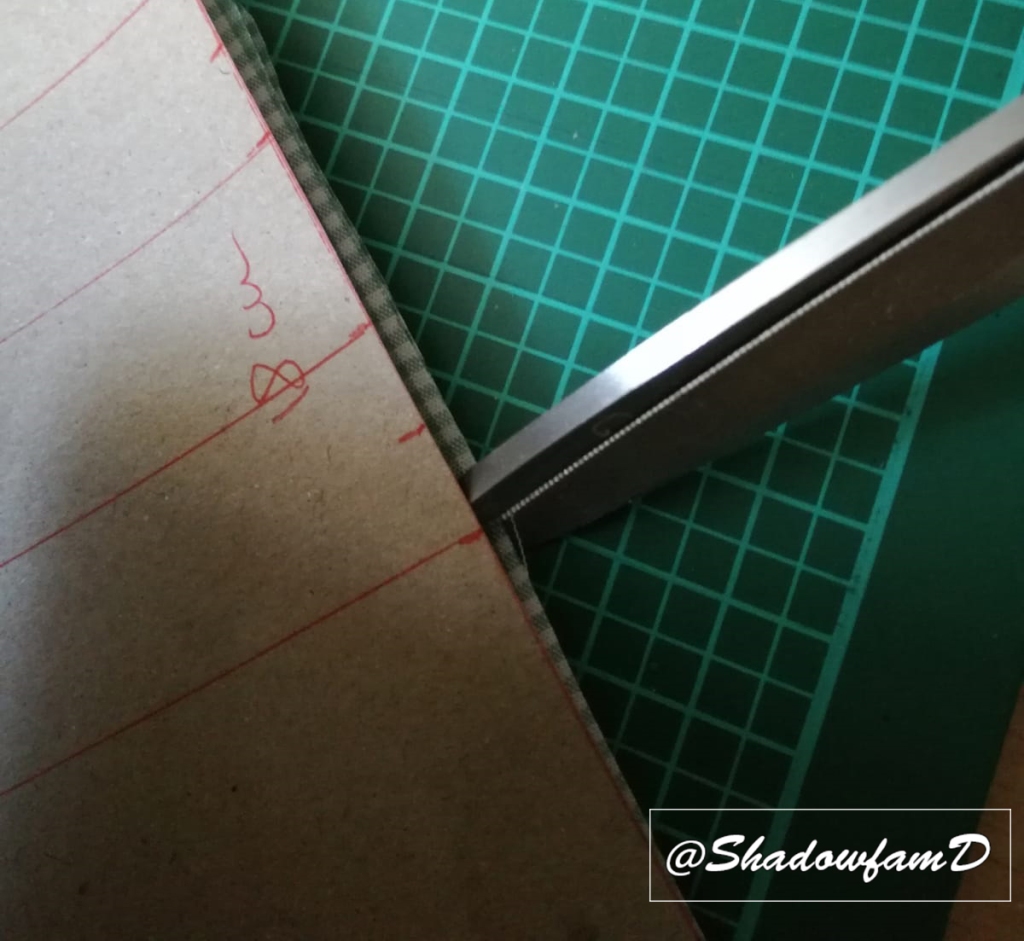Da es viele Leute da draußen gibt, die gerne Masken herstellen möchten, aber nicht wissen wo sie anfangen sollen, ist hier eine Schritt-für-Schritt Anleitung, mir der ihr selbst Masken herstellen könnt – sei es für euch, eure Familie und Freunde oder um sie an eine Organisation zu spenden, die sie dringen braucht. Solltet ihr eine solche kennen, teilt es uns doch bitte mit, damit wir sie weiter unten im Beitrag verlinken können!
Was brauche ich?

- Baumwollstoff, waschbar bei 90°C (alte Bettwäsche, Geschirrtücher,… keine elastischen Stoffe!)
- Garn
- Papier
- Schere (und/oder Rollschneider, wenn ihr sowas habt)
- Stecknadeln
- Lineal
- Stift
- (Draht)
wie fange ich an?
Als erstes erstellen wir unser Schnittmuster. Keine Angst, das ist ganz einfach.
Nehmt euren Stift und malt ein Rechteck mit den Seitenlängen 17x18cm.
Die kurzen sind folgend oben und unten, während die langen Seiten rechts und links sind.
Wenn ihr fertig seid, messt von oben 3cm ab und zieht eine Linie. Messt von dort aus 2cm und zieht erneut eine und nach 2cm nochmal eine. Macht damit weiter, bis ihr 6 Linien habt.

Lasst uns jetzt die Bänder vorbereiten. Für eure Masken braucht ihr 4 Bänder von je 4cm Breite.
Zwei davon mit einer Länge von 10cm.
Und die anderen zwei mit einer Länge von 85-90cm. Die langen Bändern werden übrigens die sein, mit dem ihr die Maske fest binden werdet. Dafür sollten sie also lang genug sein.
Schnell schneidet es sich mit einem Rollschneider, aber ihr könnt auch eine Schere dafür benutzen.
Wenn ihr zu faul seid, dann könnt ihr auch Bänder mit einer Breite von 2cm kaufen (Schrägstreifen, Köperbänder…). In diesem Fall überspringt den nächsten Schritt.

Wenn ihr fertige Bänder gekauft habt, überspringt diesen Schritt:
Jetzt da ihr die Bänder geschnitten habt, faltet sie mittig, bügelt sie. Anschließend öffnet ihr sie und faltet dann die Seiten zur Mitte hin. Faltet das ganze zusammen und bügelt sie erneut. Ihr solltet nun Streifen von 1cm Breite haben.
Hier geht es nun weiter:
Nun ist das Schnittmuster dran. Legt euren Stoff so hin, dass er doppelt liegt und ihr zwei Lagen auf einem schneidet (wenn eurer Stoff zwei unterschiedliche Seiten hat, legt sie so, dass die Seiten oben und unten liegen, die auch später sichtbar sein sollen). Pinnt euren Schnitt fest und schneidet diesen aus.
Bevor ihr danach das Schnittmuster entfernt, macht auf höhe der Linien, die ihr eingezeichnet habt, an den Seiten kleine Einschnitte (~3-5mm).

Entfernt nun das Papier und steckt euren Stoff sofort zusammen. Die Rechtecke sollten nun so aussehen, mit kleinen Schnitten an den Seiten. Da bei mir beide Seiten gleich aussehen habe ich mir ein X auf die Rückseite gemacht (dann könnt ihr es auch besser im Tutorial verfolgen).

Der nächste Schritt sind die Falten. Lasst dabei beide Schichten Stoff aufeinander, die Vorderseite nach oben. Faltet den oberen Teil am dritten Schnitt nach unten.

Dann falten diesen teil am zweiten Schnitt wieder nach oben. Der erste Schnitt sollte nun auf gleicher Höhe mit dem dritten Schnitt sein.

Macht dasselbe mit den Schnitten 4-6. Falten an 6 herunter, faltet an 5 hoch und 4+6 sollten nun aufeinander liegen. Pinnt alles fest und bügelt es, damit es so aussieht.

Näht die Falten zusammen

Jetzt kommen die Bänder dran! Nehmt ein 10cm Band und dreht eure Maske um. Faltet das Band auf und pinnt es auf die Rückseite eurer Maske, näht es dann in der Falte fest.

Dann dreht eure Maske wieder um, faltet das Band um die Maske herum und näht es von vorne fest, damit es so aussieht. Macht das auf beiden Seiten.

Nehmt nun eines der langen Bänder, dreht die Maske um, sodass ihr wieder auf die Rückseite schaut. Markiert die Mitte eurer Maske und des Bandes und pinnt beides aufeinander. Näht beides zusammen, wie ihr es bei den Seiten gemacht habt.

Dann dreht die Maske zur Vorderseite, faltet das Band um die Maske und näht das Band vom Ende, über die Maske, zum anderen Ende in zusammen. Macht das dann mit der letzten Seite ebenso.

Versäubert die Enden des Bands. Dafür eignet sich ein Zickzackstich.

Damit ist die Maske fertig!
Für den Fall, dass ihr spenden möchtet, akzeptieren manche Organisationen nur Masken, in die man an der Nase einen Draht einsetzen kann. Hier zeigen wir euch noch wie das geht.
Nehmt ein Stück Stoff in der Größe von 2,5x10cm. Versäubert die kurzen Seiten, faltet und bügelt den Stoff. Jetzt näht die langen Seiten zusammen, schließt aber nicht die kurzen Seiten!

Dreht eure Maske, sodass ihr die Rückseite seht. Legt die gefaltete Kante eures Stoffstücks an die obere Kante eurer Maske und näht so nah wie möglich an der Kante beides aufeinander.

Herzlichen Glückwunsch! Ihr habt eure erste Maske mit Drahteinsatz genäht.

